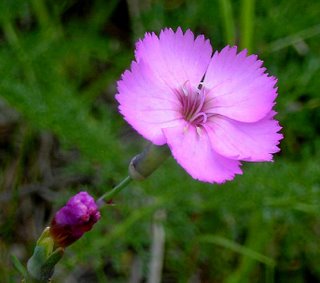5. (20.11.2006) Aufbau/ Funktion: Wurzel root - root - leaf
All seed plants are geliedert into three main parts: root and shoot, and this can be divided again into the trunk (stem axis in non-woody plants) and in the leaves.
root
It is usually located below ground and has no leaves. The root system can be designed differently. You can have one main root that penetrates deep into the soil (deep roots) or the Seitenwuzeln grow rather flat out to all sides (Shallow). If the root of the lower Part of the shoot axis is growing this is called sprossbürtige roots.
deep roots (eg oak, dandelion, pine, fir, rape, ...)
shallow roots (such as spruce, poplar, potato, grass, ...)
Sprossbürtige Wuzelsysteme (eg cereals, ferns, onion, lily of the valley, ...)
The root has three main tasks:
- anchor the plant in the soil
- uptake of nutrients and water and transmission to the offspring
- reserve materials store
The different components have different Funktuionen:
- root hairs -> water and nutrient uptake
- rhizodermis -> Protection
- central cylinder -> stock and water management
- bark -> hydrogen storage and ventilation
- vascular bundles with vessels and sieve-tubes -> stock and water management
- Wurzelhaare -> Wasser- und Nährstoffaufnahme
- Rhizodermis -> Schutz
- Rinde -> Stoffspeicherung und Durchlüftung
- Zentralzylinder -> Stoff- und Wasserleitung
- Bildungsgewebe -> Bildung neuer Zellen
- Wurzelhaube -> Schutz
by metamorphosis of the roots are "functional" roots were participating in certain environmental conditions have adapted. storage roots : Beet (thickened main root, eg: carrot and beet), tubers (thickened sprossbürtige roots, such as: lesser celandine and orchids); detention and climbing roots (attachment to solid surface, ie: Ivy and Liane)



